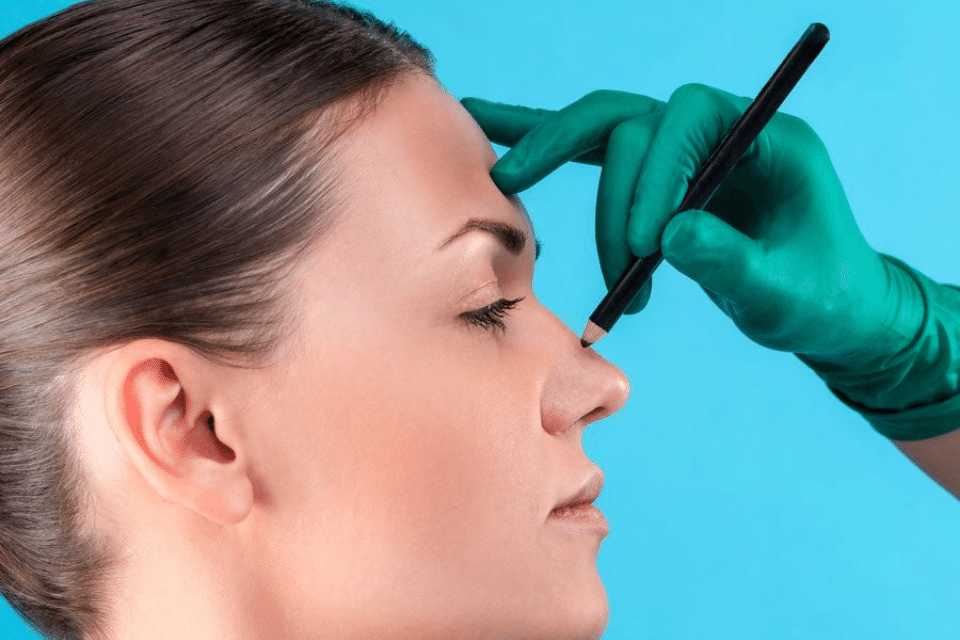
The nasal cavities are a pair of air passages that run parallel to the ground inside our facial skeleton. Inside the nasal cavities, in the middle of both nostrils, we have a vertical and straight wall that runs deep into the middle of both nostrils, which we call the septum. This wall grows and develops like the whole skeleton as the years pass during the growing age. During this process, blows to the nose cause this wall to gain curvatures. We call this state of the wall with curvatures as septum deviation.
Since deviation is in bone and cartilage tissue, it can only be corrected by surgery, not by treatments such as medication, cream or spray. We also call the surgery to correct deviation Deviation Surgery (Septoplasty). (It can be performed together or separately with rhinoplasty. If septoplasty, i.e. deviation surgery, is also performed during rhinoplasty, septum deviation is corrected. In this way, while the shape of the nose is corrected, breathing comfort is also increased).
Those who have been diagnosed with deviation in the ENT examination,
- If they are 17 years old and 18 years old
- If they do not have a blood or circulatory disease that makes general anesthesia risky, liver or kidney failure, or a respiratory disease that reduces lung capacity, and if they have received approval from the relevant branch doctors for other existing and ongoing diseases, they can undergo septoplasty surgery.
Deviation Surgery (Septoplasty) Procedure and Implementation
Septoplasty is performed under general anesthesia. The duration of the operation varies according to the conditions, tendency to bleed, the presence of the same or different previous operation and other factors. In general, the duration of septoplasty is between 20 minutes and 1 hour.
In addition, the preoperative preparation of the septoplasty and the preparation before leaving the operating room takes a total of 40 minutes.
ENT surgeon during septoplasty:
- It makes a hidden incision through the patient's nostrils, which will provide control of the inner wall structures.
- It removes the covering tissues covering the inner bones and cartilage of the nose.
Subsequent phases;
- The bones and cartilages in the nose are separated and cut from the deformed parts to allow proper airflow.
- Specialized dissolving sutures are used to reposition the covering tissues and ensure healthy and smooth healing.
- One silicone support is placed inside the nose on the right and left. According to the surgeon's instructions, it can usually be removed 5 - 8 days after surgery. You may be advised to clean the nose by spraying sea water spray and blowing gently.
- At the end of the deviation surgery, a small gauze bandage may be taped to the tip of the nose. It may need to be kept for a few hours or 1 day to prevent secretions and light blood from coming from the nose into the mouth.
- There may be minimal bloody mucus leakage but no bleeding. There is no swelling, bruising or pain.
- When the operation is over, anesthesia is terminated and the patient, who regains consciousness in a slow and controlled manner, is made ready to be sent to bed safely by the anesthesia team.
- The patient is taken to bed and made to rest with the head elevated at 30 degrees. A slight feeling of heaviness in the head, feeling of pressure, nausea, drowsiness, grimacing may last until the effect of anesthesia is reset. There may be a slight burning sensation in the nose, but I repeat, our patient does not have any pain and should not have any pain.
- Ice gels with pressure-free contact around the nose can be placed for 1-2 hours.
- Our patient starts drinking water in the 1st hour and eating in the 2nd hour of admission. The first meal starts with watery and soft foods. He/she can eat whatever he/she wants in the following and other meals. Although it varies depending on weight, he/she is advised to drink 2 - 3 L. of water a day.
- Our patient can go to the toilet in the 3rd hour accompanied by his/her nurse or relative, and in the 4th hour he/she is taken for a small walk in the hospital corridor. If he/she wishes, he/she can sit in the hospital cafeteria for a short time at the 5th hour. At the 6th hour, he/she can take a shower with the information of his/her relative. Face washing, tooth brushing, beard shaving, make-up etc. are free.
- After deviation surgery, most of our patients are sent home after 1 day. On the day of discharge, absolute bed rest is essential. However, the following day, activities such as going out, social gatherings, short and slow walks, short trips, driving are allowed.

